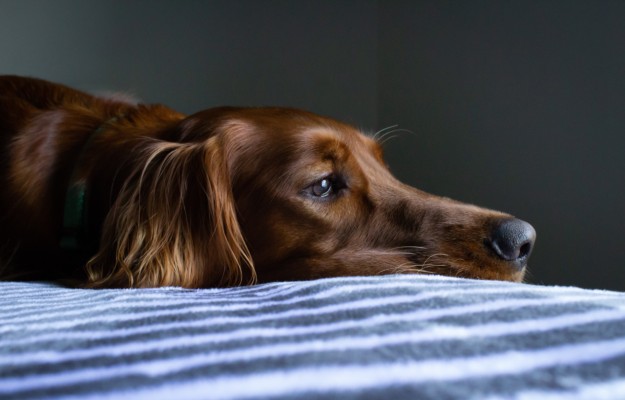Hookworms are intestinal parasites that can be fatal in pups. Less than 3mm in size, they may be difficult to see. The most common type of hookworm in dogs is Ancylostoma caninum. Other hookworms that can make our pets sick include Ancylostoma braziliense, and rarely, Uncinaria stenocephala.
Hookworms use their hooklike mouthpieces to latch on to the walls of the small intestines and feed on the dog’s blood, leading to anaemia, blood loss, loss of appetite and lethargy in dogs. In some cases, especially in pups, the infestation can even cause death.
Not all hookworms cause symptoms like weight loss and anaemia, however. Some lie in tissues and enter a state of dormancy and become enclosed in a cyst (known as being encysted).
Hookworms can be transmitted in multiple ways:
- Oral-faecal route: If your dog sniffs or eats the poo (coprophagia in dogs) of an infected animal.
- Accidental ingestion: These worms can get attached to dogs' skin and paws when they go out for a walk. If your dog ingests these worms while licking and grooming their skin or paws, that can also lead to a hookworm problem.
- Eating an infected animal: If your dog eats an animal carrying the worm (like a rodent).
- From mother to pups: Dog moms can give worms to their pups in utero (in the womb) or while breastfeeding them.
Hookworms are quite hardy and can survive in the open environment for some months, so it is always a good idea to safely dispose of your dog's poo.
Since hookworms reproduce quickly, they can be easily seen in a stool sample. Your vet will conduct a test known as faecal float to confirm a diagnosis of hookworm disease.
Deworming your dog is sufficient to take care of the infestation. However, the drugs may not pass through the gastrointestinal tract and will only act on the parasites present in the intestines. Therefore, you may need to repeat the treatment after two to four weeks to ensure that all the worms are taken care of once they migrate to the gut.
Management involves decontaminating your house by safely disposing of the faecal matter. If you have more than one dog, it would be a good idea to get the other dog dewormed as well. Hookworms spread quickly and preventive steps such as these work best.
It is possible to deworm a mother while she is pregnant to avoid gestational transmission. This, however, is an involved process and will need to be discussed in detail with the vet. If you live in an area that is known to have hookworms, this step may be necessary.
Some types of hookworms in dogs, like Ancylostoma braziliense, can also affect humans. They enter through the skin to cause a condition called cutaneous larva migrans. The best way to prevent this is to vigorously wash your hands and feet after playing with your dog, promptly dispose of any faeces from your vicinity and avoid walking barefoot in places where a dog may have pooped (this includes public parks and beaches).
Cutaneous larva migrans usually does not travel to the intestines in humans; in cases where it does, it causes diarrhoea. These are the signs of cutaneous larva migrans in humans:
- Red lesions on the skin: The larvae leave a twisty red trail as they move under the skin. They can move as much as two centimetres in a day.
- Swelling
- Itchiness
- Discomfort
- In rare cases, diarrhoea
Contact your doctor if you notice these symptoms, especially the red, twisty lesions. Usually, hookworms can't survive in the human body for more than five to six weeks.































